
Rice fields in Vinh Hoa commune. Photo: THUY TIEN
The returnee and his footsteps on the homeland's land
I was born in Vinh Hoa, then followed my parents to Rach Gia to study and work. My childhood was associated with canals, streams, coconut trees, rice fields... then life swept away, my hometown sometimes only remained in my memories. This time returning as a reporter, I both worked and found myself on the old land. Accompanying the group was Mr. Phan Quang Trung - Deputy Head of the Department of Culture and Society of Vinh Hoa commune, also a son of the homeland. Before the commune merged, he worked at the Department of Education and Training of U Minh Thuong district, his wife was a teacher. Not relying on salary, from a few hectares of land, he and his wife chose an economic model suitable to the soil to develop, taking care of their profession and nurturing the family economy. Mr. Trung's story opened a day of practical thinking.
Vinh Hoa used to be a land of “known names but not faces”, associated with the following places: San Gach, Cay Bang, Lot 12, Thay Quon, Xep Ba Tau, Xeo Ke, Xeo Can… and the battles of the past. The war left many wounds, people lived in a state of lacking infrastructure, clinging to rice fields and sugarcane fields amidst the uncertainties of the market and weather. After the merger, from the four familiar places Vinh Hoa (old), Thanh Yen A, Hoa Chanh, Thanh Yen, Vinh Hoa is now a new commune-level administrative unit of the province, covering more than 146km2 , with 29 hamlets, 227 self-governing people's groups, and more than 51,000 people, including Kinh, Khmer, Hoa and other ethnic groups living along the canals and streams. Currently, the poverty rate of the commune is more than 3%, near-poor is more than 2%. Behind the numbers is the journey of a rural area that has suffered many losses.

Farmers in Vinh Trung hamlet, Vinh Hoa commune harvest shrimp and weigh them for traders. Photo: VIET TIEN
I met Mr. Van Cong Thanh at Nha Ngang in Vinh Tan hamlet in the midday sun, next to the shrimp ponds along the Cai Lon river. He is 47 years old, a teacher, his wife is Ms. Hoang Thi Thoa - a teacher at Hoa Chanh 1 Primary School. After many years of teaching, he and his wife know each student's family situation, each water level, the dry and salty seasons. Then he decided to quit teaching, buy nearly 4 hectares of land along the river to raise crabs, shrimp, tilapia... Only when he returned to the new pond, the culvert still smelling of cement, he smiled gently: "We go slowly but surely... let's try it and see how it goes". Before that, in addition to teaching hours, he installed software, repaired computers for agencies, schools, and game shops. After quitting teaching, he learned to drive, drove a taxi, then realized that the need for travel and transportation was quite large, so he invested in transportation services. Currently, he has 1 16-seat car, 2 7-seat cars, 1 4-seat car to serve people going to parties, sightseeing, officials and teachers going to study and work. From a person living on a state salary, he became the owner of an economic model combining services and agriculture on land that was once considered difficult to do business, opening a new direction for himself in his hometown.
On another alluvial land along the Cai Lon River, Ms. Tran Ngoc Bich (43 years old), a teacher at Hoa Chanh 1 Primary School, also chose a similar path. Seeing the potential of this land, she rented 3 hectares of land along the river to implement a model of raising shrimp, snakehead fish, and perch. "I've only been raising them for nearly 2 months, I haven't harvested yet, but I see the water and the breed are suitable, I hope for a good harvest," Ms. Bich said while feeding the fish with us. She told stories about her savings, about learning from friends' experiences, and about living and sleeping with the water since buying the land and boldly investing in a new economic model.
Looking at Mr. Thanh, Ms. Thoa, Ms. Bich, Mr. Trung and his wife after school hours wading through the fields, tending to shrimp ponds and rice fields, I saw a class of young farmers and intellectuals in Vinh Hoa who are finding a new path for themselves. They cling to familiar land, rely on government support, and take loans to reorganize production, accepting risks in exchange for opportunities to improve their quality of life. In their stories are very specific calculations of seasons, costs, and input and output, adding vivid colors to the changing picture of the commune. Vinh Hoa is no longer just changing on the administrative map, but is also changing from the people's own thinking and ways of doing things.

Farmers in Vinh Trung hamlet, Vinh Hoa commune harvest shrimp. Photo: VIET TIEN
New rural picture on the old base area
Behind such specific fates is a general picture that is changing. After the merger, Vinh Hoa has become larger in area, with more development potential opening up. From the shrimp-rice area along the Cai Lon River, the two-crop rice-color area, to the water coconut fields associated with tourism ... everything is changing. The average income per capita of the commune is currently about 70 million VND/year, much higher than before. Rural roads, concrete bridges connecting hamlets, along with national highways and provincial roads through the area help agricultural products and goods to come and go more conveniently than before.
Sitting in the hall, listening to the commune leaders introduce the potential and advantages, I had a clearer picture of Vinh Hoa's journey from the new rural construction movement. Before the merger, there were 3 communes that met the new rural standards, 1 commune was an advanced new rural commune. When establishing a new commune, the steering committee was completed, the criteria were reviewed according to the new standards, planning was adjusted, infrastructure was invested in, production was reorganized, and people's lives were taken care of. In the past 5 years, the total product value was more than 9,300 billion VND (comparable price), agriculture, forestry and fishery played an important role. The shrimp-rice area of more than 4,600 hectares is a bright spot with the model of 1 shrimp crop, 1 rice crop, intercropping giant freshwater prawn, whiteleg shrimp, crab, fish, many households participated in organic shrimp-rice, VietGAP, some places earned more than 100 million VND/ha/year.
The 2-crop rice area in Vinh Hoa is strongly shifting to high-quality rice, participating in the 1 million hectare project, applying the technique of alternating wet and dry irrigation, "1 must, 5 reductions". The Cai Lon riverside area is developing an improved shrimp-rice and aquaculture model, still keeping the dark green water coconut leaves to preserve the ecology, considering community tourism associated with the old revolutionary base. The whole commune currently has 9 cooperatives, 35 cooperative groups on high-quality rice, shrimp-rice, people's credit, and 5 products meeting the 3-star OCOP standard (fish sauce, dried shrimp, sun-dried shrimp) that are making their mark, bringing Vinh Hoa agricultural products to the market with clear brands and origins.

Ms. Tran Ngoc Bich, resident of Vinh Hoa commune, tested a fish farming model along the Cai Lon river. Photo: THUY TIEN
However, Deputy Secretary of the Party Committee Truong Trong The and Chairman of the People's Committee of Vinh Hoa Commune Lai An Nhan shared that Vinh Hoa still has many things to worry about. Some new rural criteria have been achieved but are not yet stable, infrastructure still has essential roads and works that need more investment; agricultural production is still fragmented, application of science, technology, and digital transformation is not as expected. In ethnic minority areas, the living standards and intellectual level are still different; social resources for new rural construction have been mobilized, but compared to the potential of this vast land, there is still much room to continue to mobilize, connect, and promote.
There is much talk in the reports about planning, mechanisms, and policies, but when you go out into the fields, along new roads, shrimp farms, and orchards, you will see that the core is still the people. They level the land, donate land to open roads, contribute to building bridges, cultural houses, schools, and medical stations. People like Mr. Thanh, Ms. Thoa, Ms. Bich, and Mr. Trung and his wife are the image of a new generation of dynamic farmers, cadres, and teachers who dare to borrow capital, dare to cooperate, and dare to enter the commodity production chain instead of keeping the old farming methods.
In the afternoon, leaving Vinh Hoa, the car drove on the inter-hamlet road, with rice fields, shrimp ponds, houses on both sides, and in the distance, a row of water coconut trees along the Cai Lon River. Childhood memories blended with the journalist's perspective, I thought about the long journey of a heroic commune: From bombs and bullets, deprivation to the new countryside, then towards the modern new countryside. The figures of income, production value, and investment capital will still change, but the most valuable thing is the spirit of self-reliance, self-improvement, and the initiative of the Party Committee, government, and people that is being strongly aroused.
VIET TIEN
Source: https://baoangiang.com.vn/vinh-hoa-hanh-trinh-moi-cua-mot-xa-anh-hung-a467358.html






![[Photo] General Secretary To Lam and National Assembly Chairman Tran Thanh Man attend the 80th Anniversary of the Traditional Day of the Vietnamese Inspection Sector](https://vphoto.vietnam.vn/thumb/1200x675/vietnam/resource/IMAGE/2025/11/17/1763356362984_a2-bnd-7940-3561-jpg.webp)






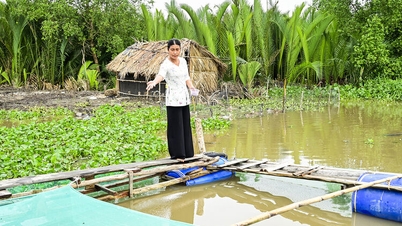
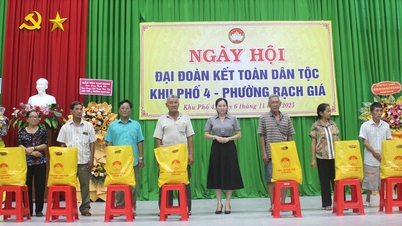
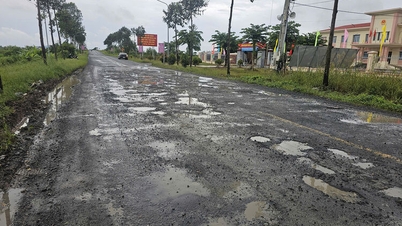
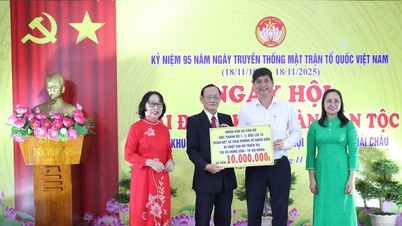

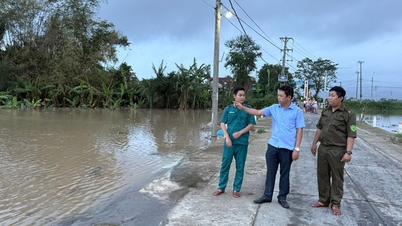












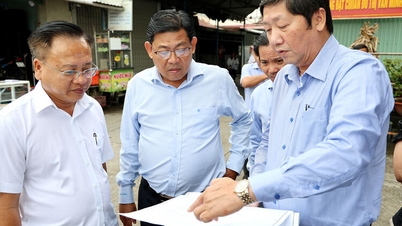
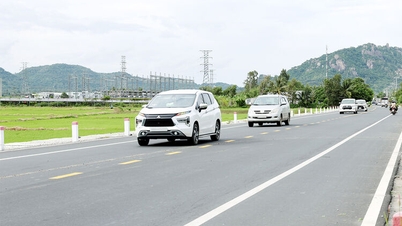
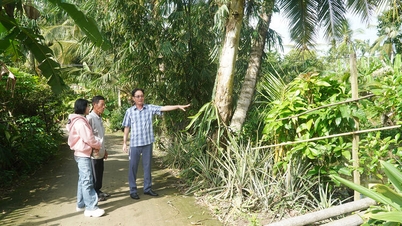





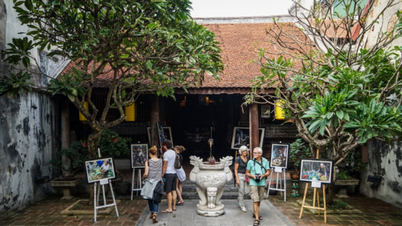

















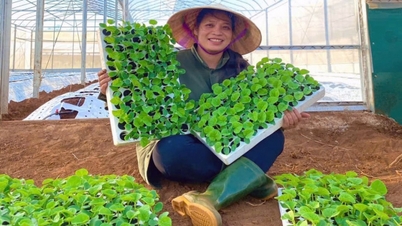




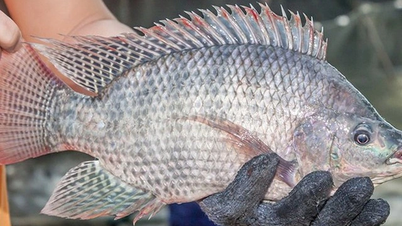











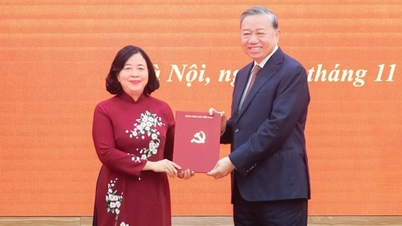


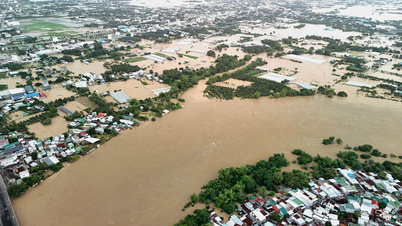



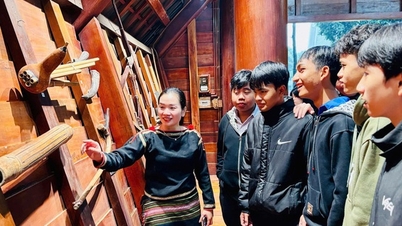


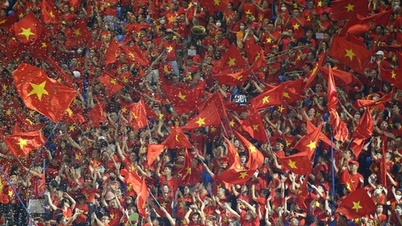





















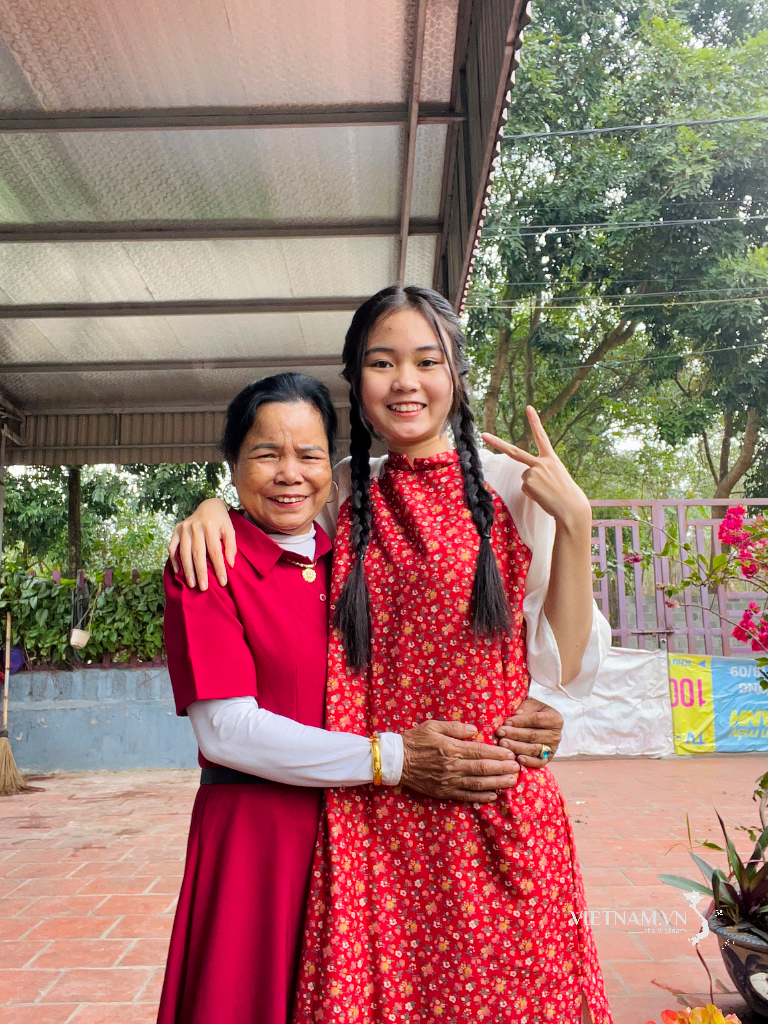



Comment (0)